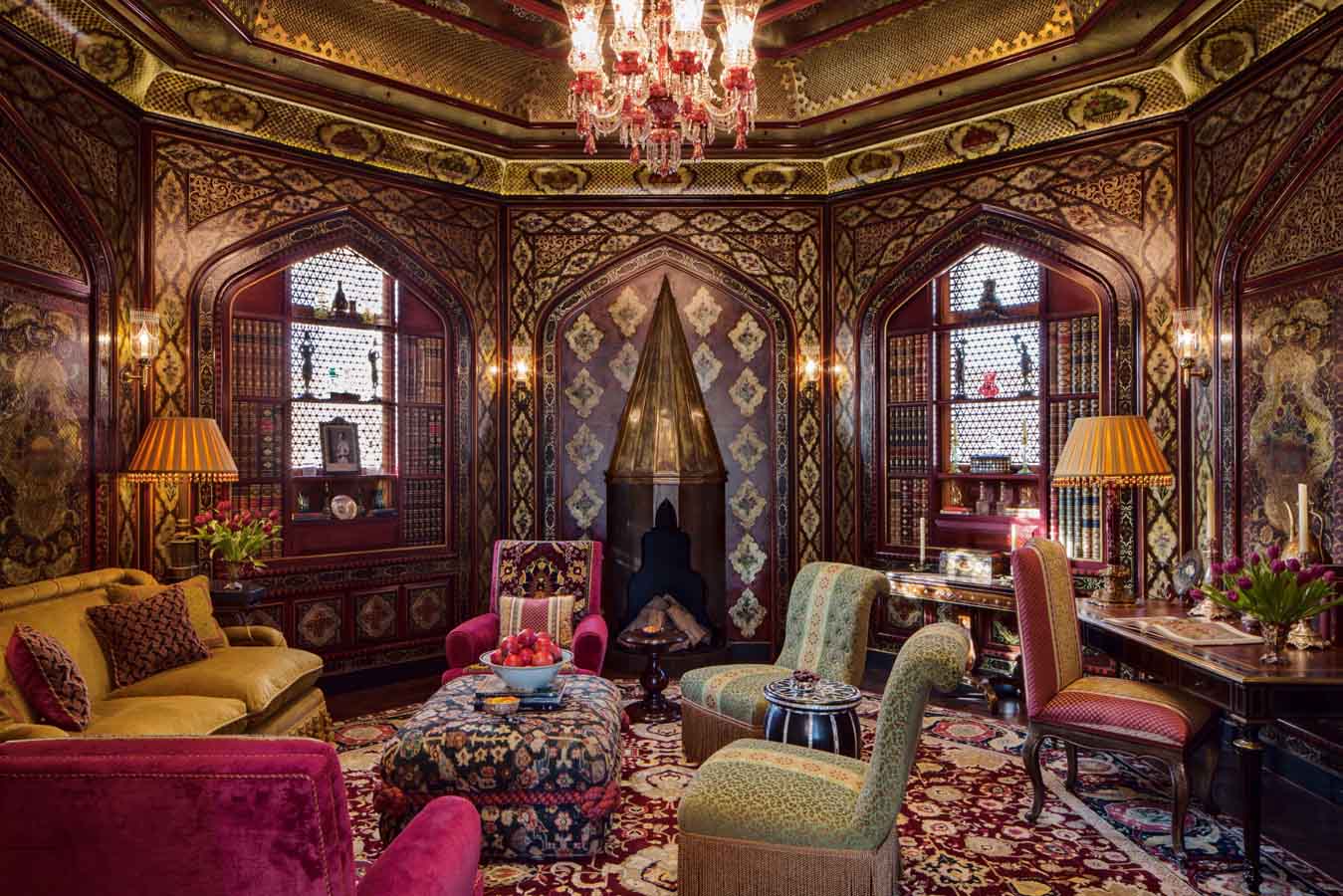
This design for a library in Kuwait is very much in the spirit of eighteenth- and nineteenth-century Syrian and Ottoman houses. Every rich, intricate and sumptuous effect that I love is in play and comes together to create the perfect bespoke home.

The final layers of detail have to be known to me in every way for each surface inch before I finalize a room's design, otherwise I cannot calibrate the balance between decoration and architecture. Hand printed papers create the pattern and, once on the walls, the scheme is hand finished with both painting and gilding.
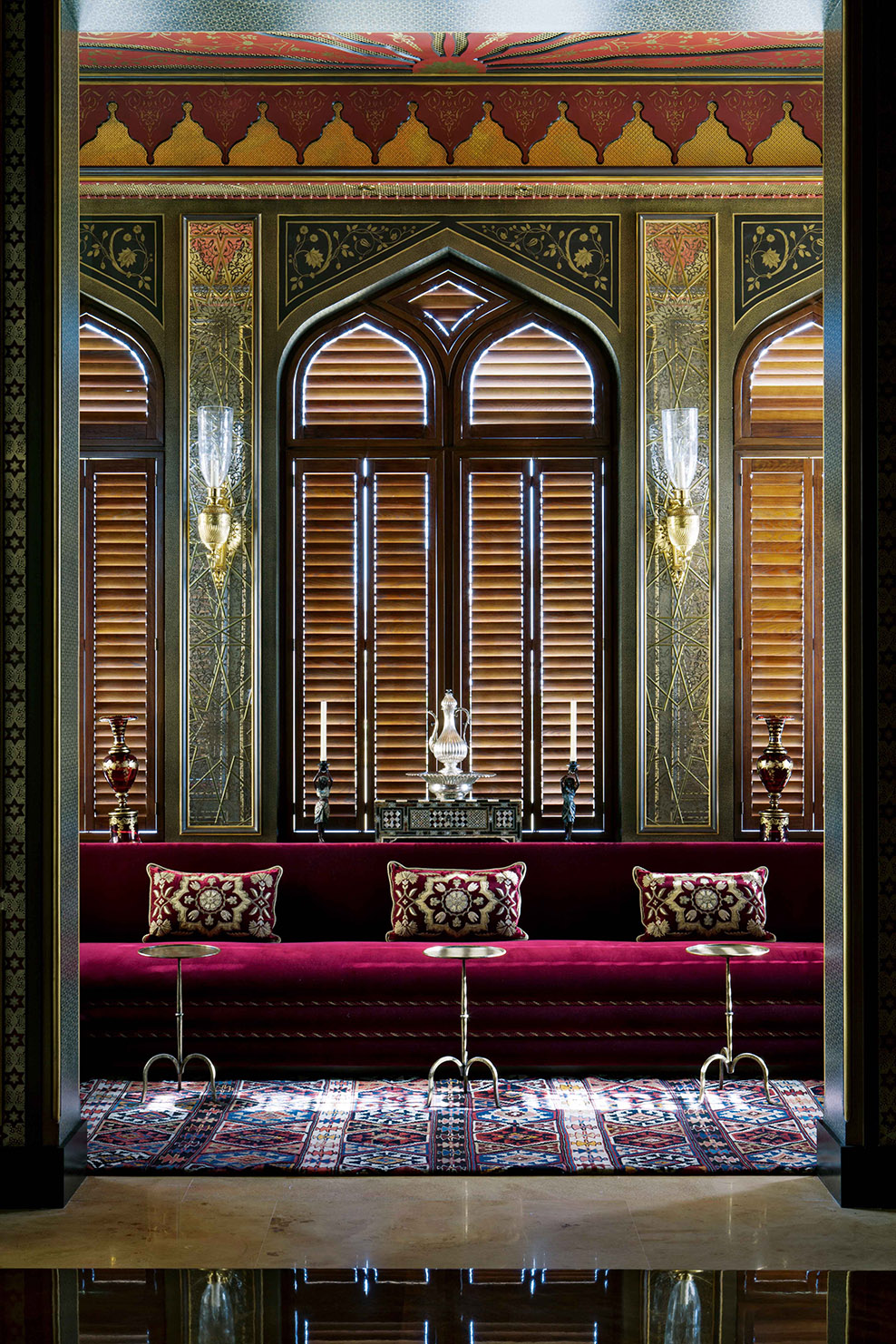
An Ante Room off a grand Dining Room inspired by Ottoman Houses on the Bosphorus.
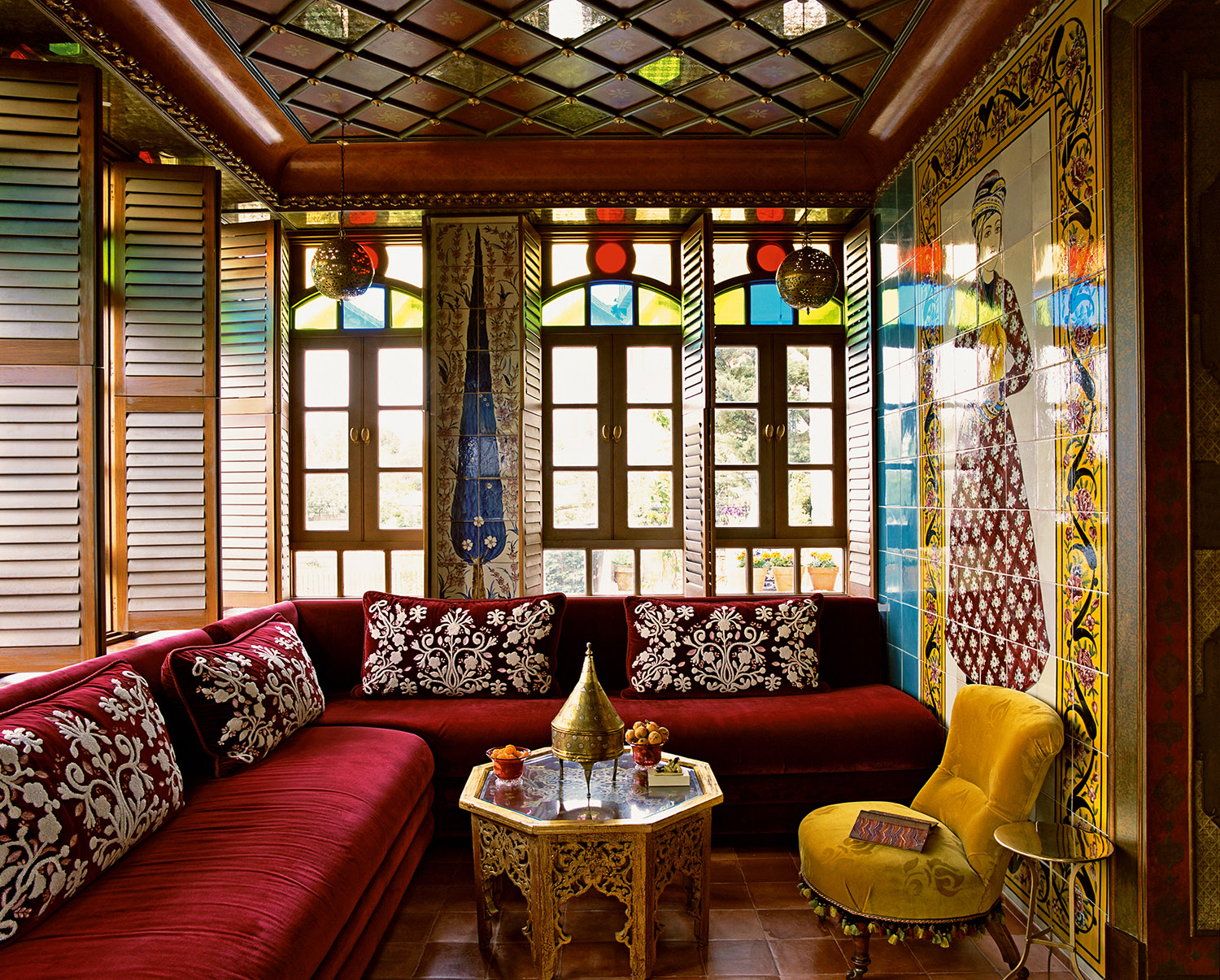
In this enclosed veranda in Lebanon, which overlooks a spectacular view of mountains, the design is in keeping with its locality in every respect - the windows were based on traditional Lebanese and Ottoman architecture, while the tiled portrait was made in Iran after seeing something similar in an old Shiraz house.
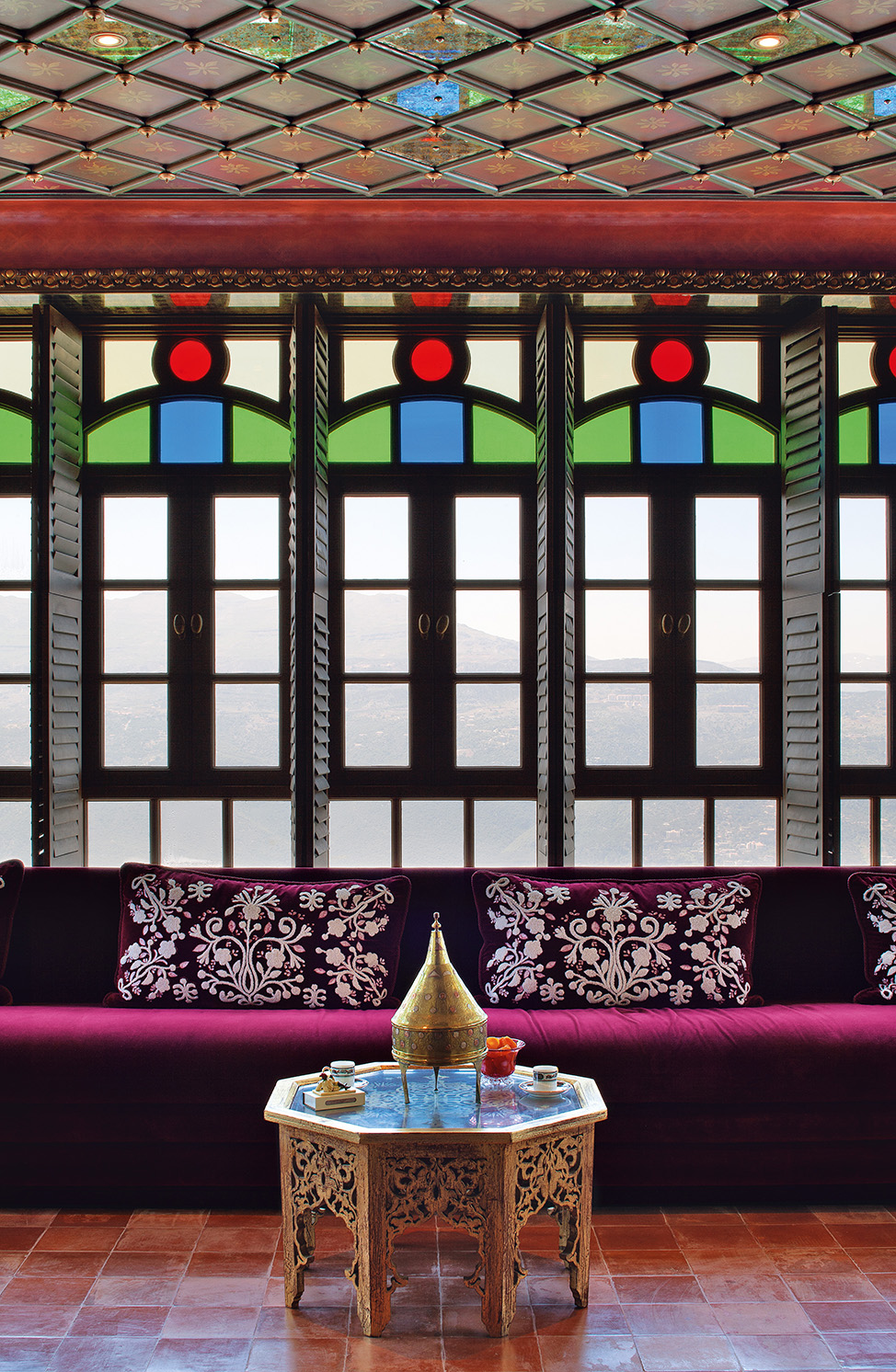
I designed these coloured-glass windows, having taken inspiration from historic Lebanese architecture, and the fine wool boucle embroidered cushions are among the many details that further enhance the space. Its charming, informal character is inviting, coaxing you to just sit and be.
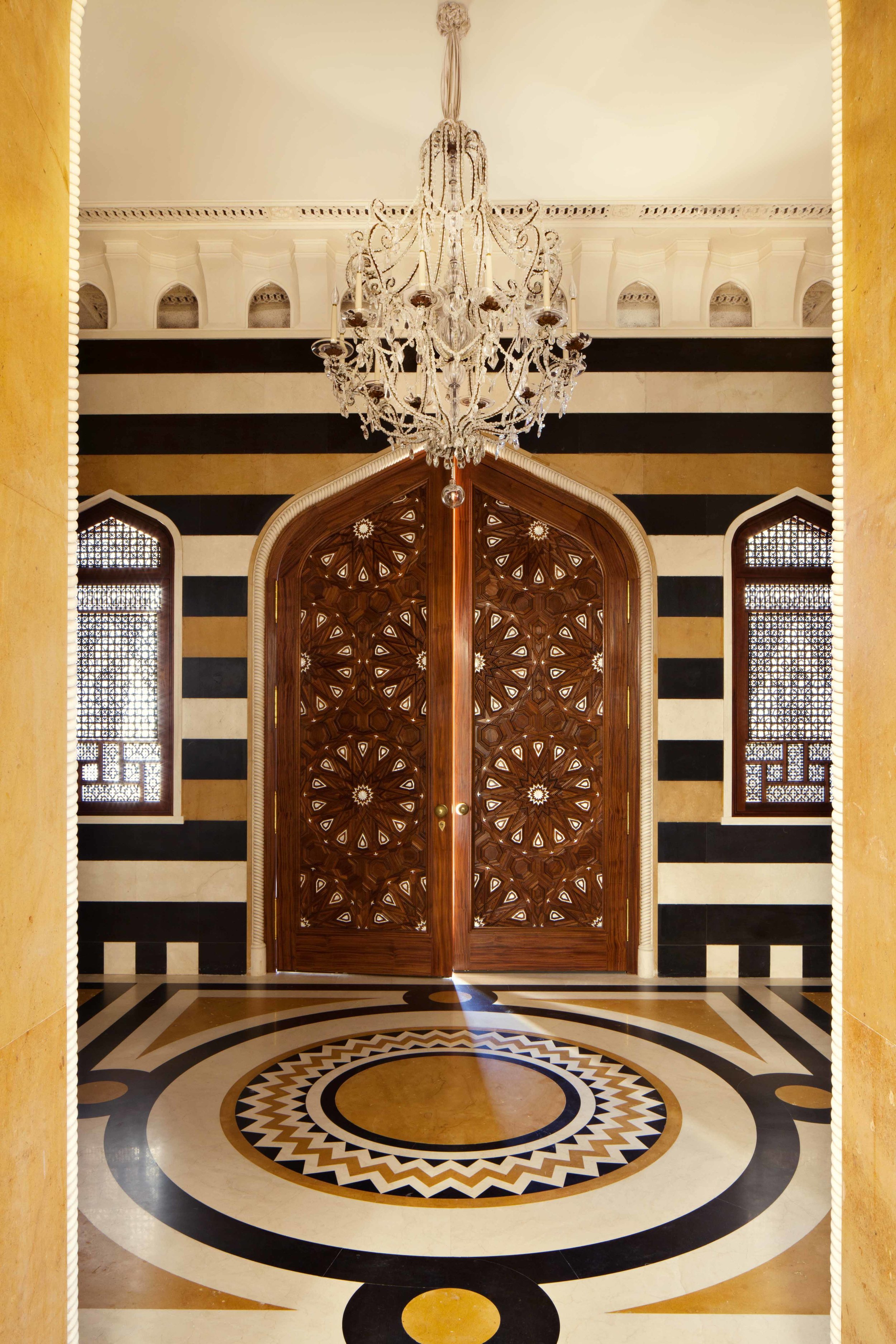
The design of the floor is fascinating in the way it works with the walls and surrounding decoration, as it gives the space its own internal flow and movement. All the marble has been antiqued to ensure it has no surface sheen, and where appropriate, there is the odd dink and bump to make the finish perfectly imperfect.
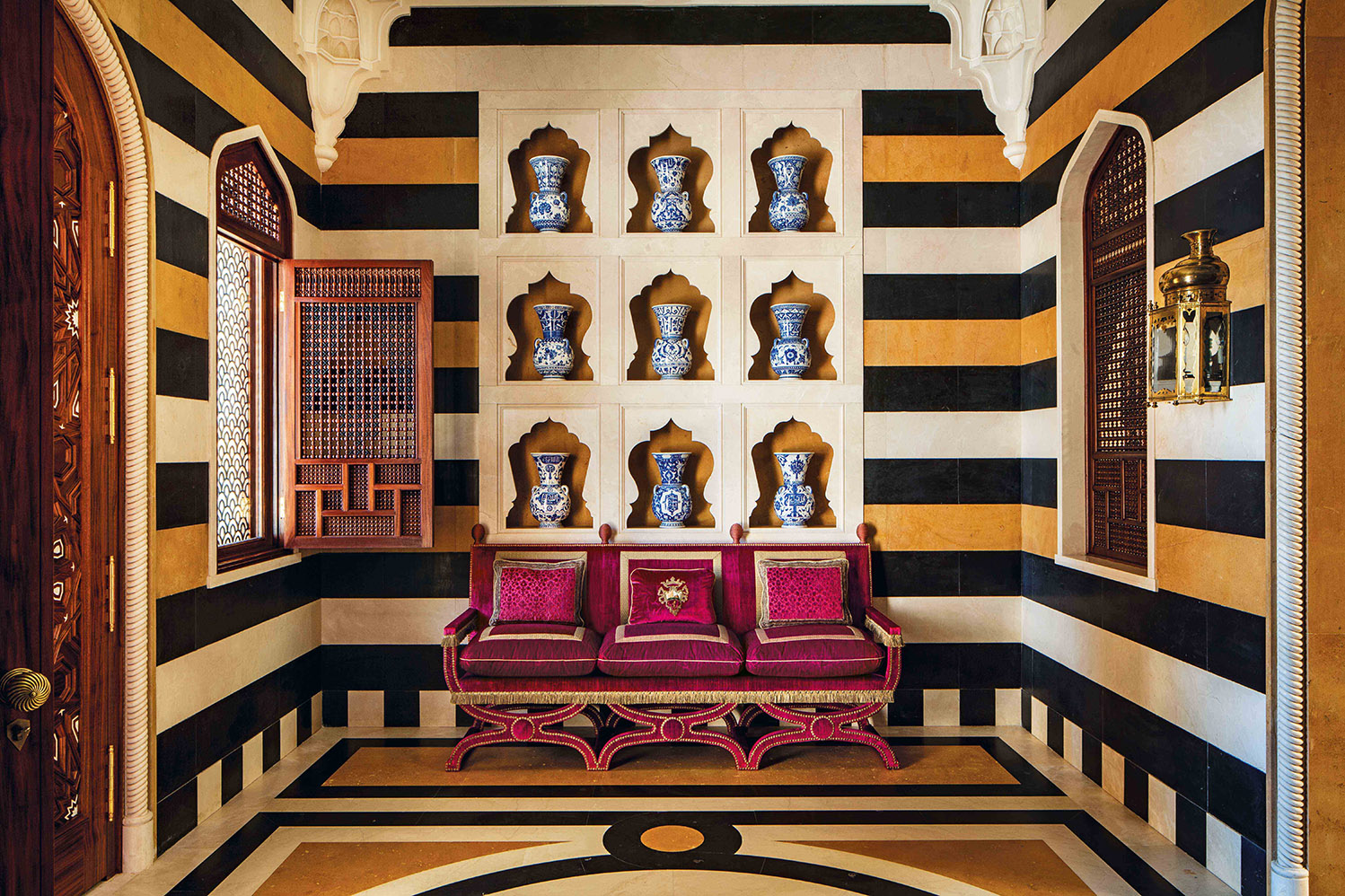
This is a wall of carved mrble alcoves, each of which contains a sixteenth century style Turkish blue and white mosque lamp. Mashrabiya grillwork adds a beautifully light touch to the space, as these shutters not only bring a certain prettiness, they also allow the space to be fllled with softly diffused daylight.
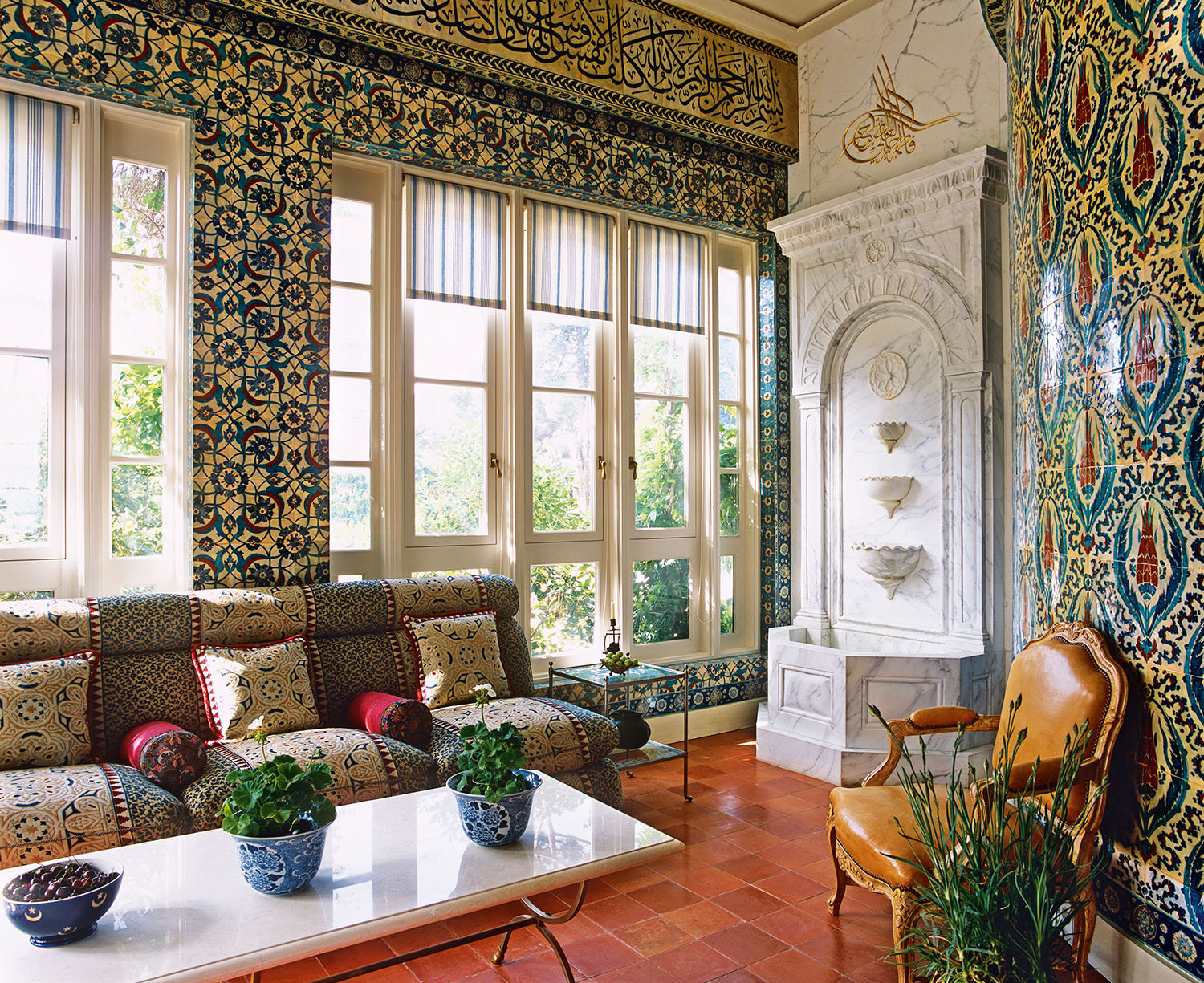
This conservatory displays much more than mere decoration - it's a statement of imaginative use of space. The room was once a veranda, but because north-facing, it was never much used. IN this new enclosed incarnation, where the walls are decorated with faux Iznik tiles, the room has become usable throughout the day in all seasons.
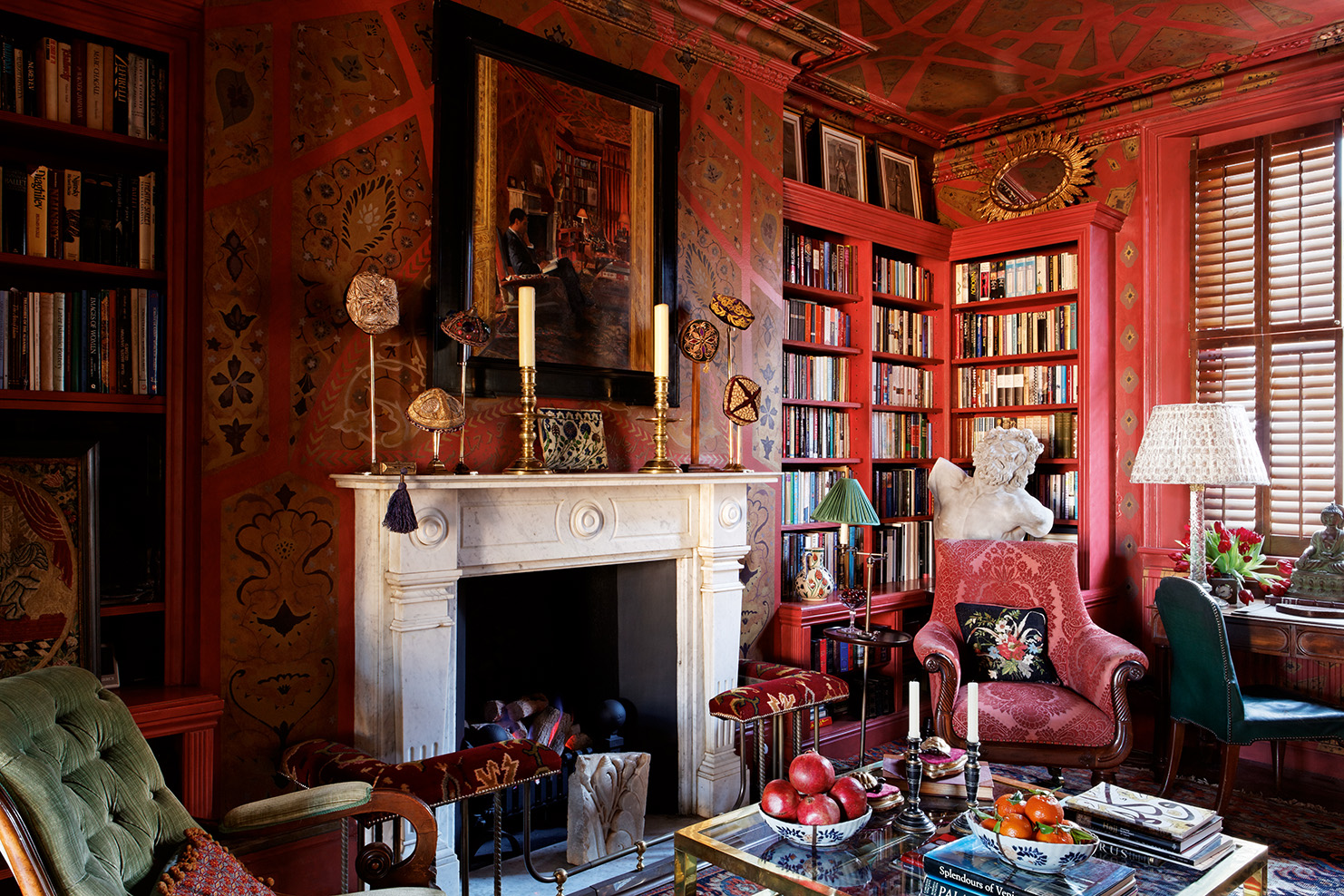
The walls in my own flat are based on ageless Islamic buildings, the decorations of which were reinterpreted here on my walls. I have used a collection of 20th Century Uzbek, Taskent, Lakai, Tekke and Karakalpak Hats on Victorian brass and wooden hat stands as decoration on top of this fireplace.
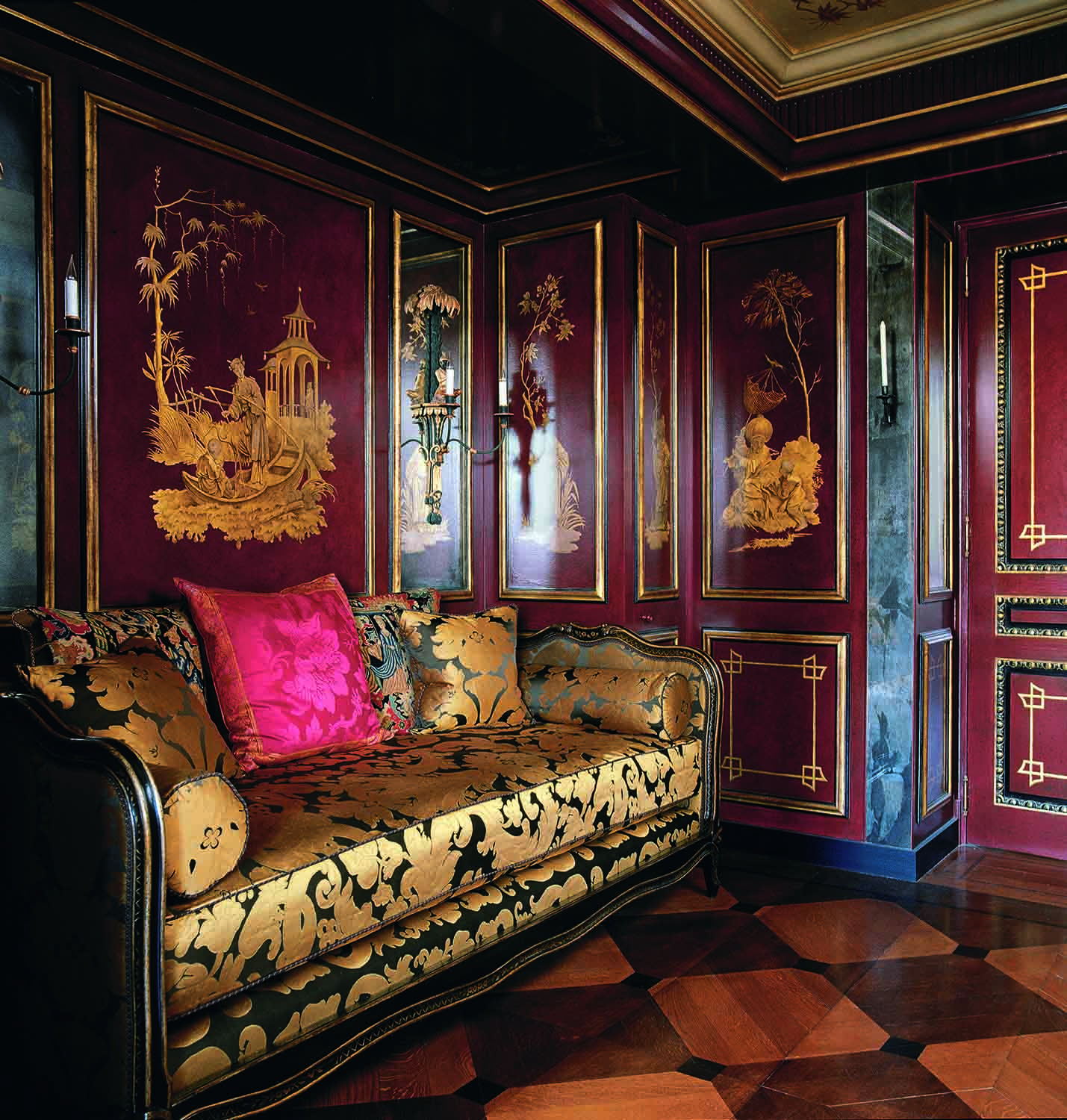
I wanted to creat the feeling of a fantastical jewellry box. Cupboards and a shower room lie hidden behing the wall panels, which have been painted on canvas to mimic Oriental lacquer.
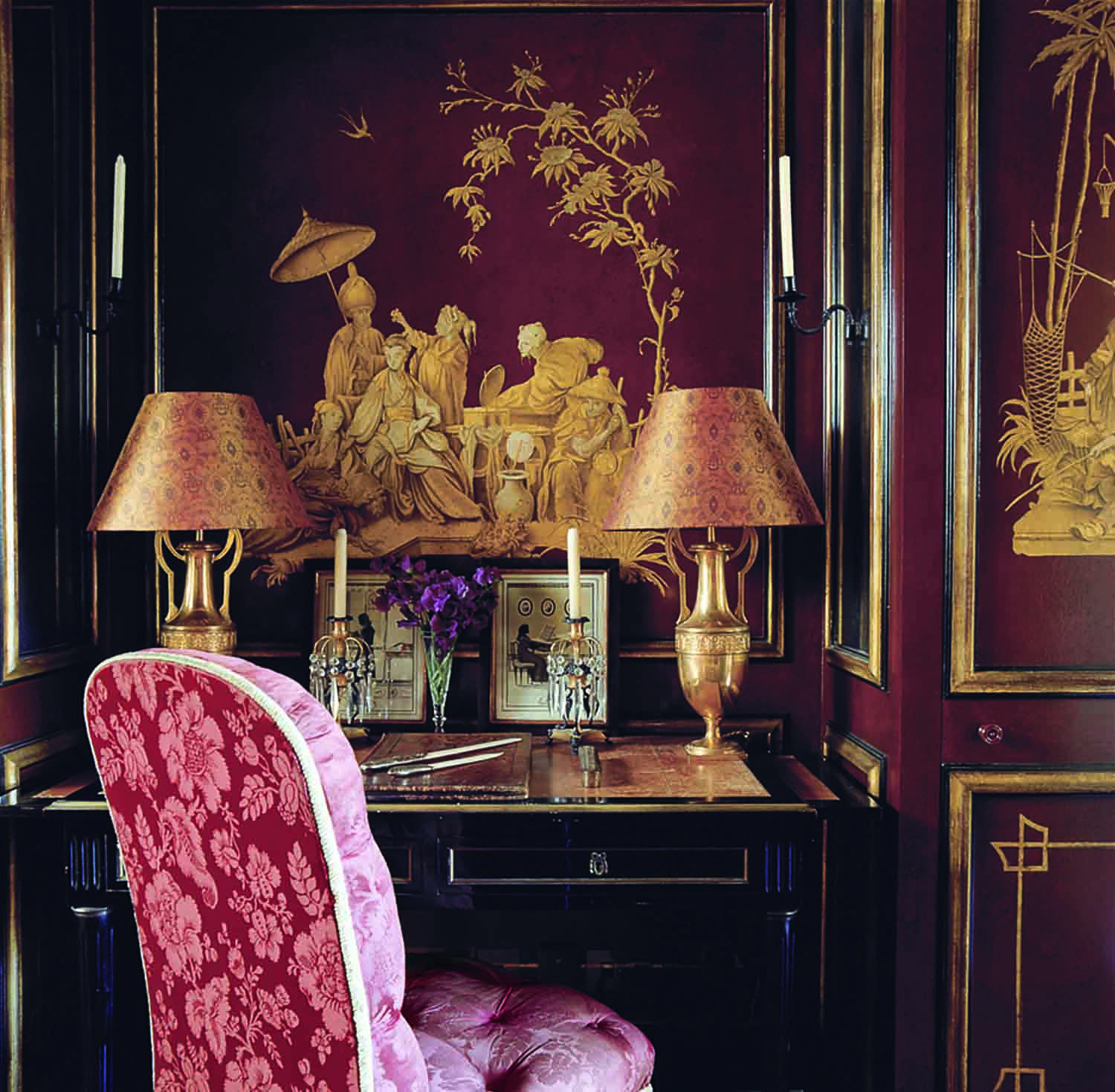
A dressing table-cum-writing desk has been built into the run of storage cupboards in this guest room. I particularly enjoy the slightly clashing nature of the pinkish red silk chair against the Oriental red lacquer on the walls.
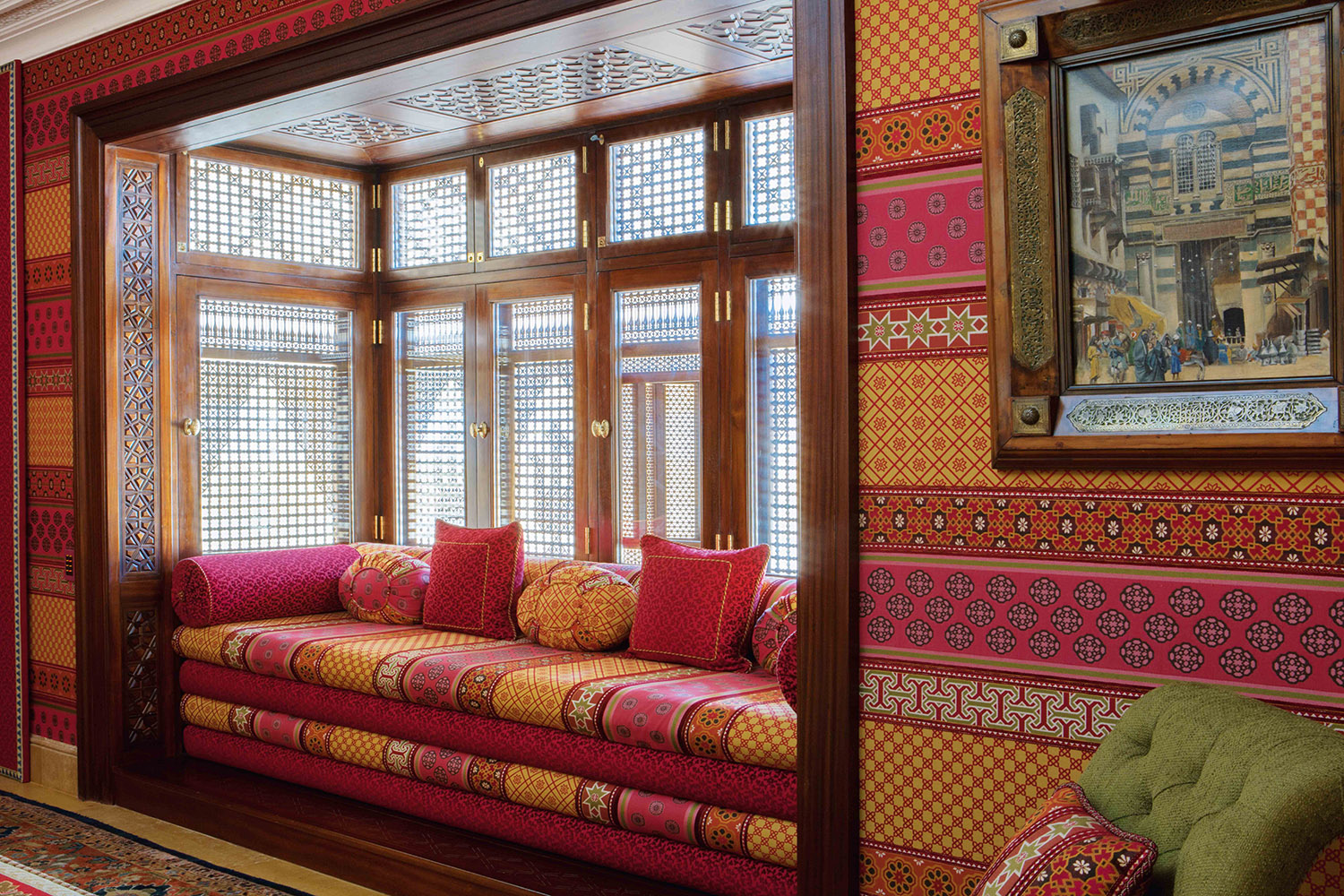
This idea is based on the externally protruding balconies you so often see in places like Cairo - the wooden screening allows a view out, but no one can see into the space. It is a kind of privacy that can only be properly acheived using this kind of Mashrabiya grillwork, where tiny peices of turned and carved wood are intircately and ingeniously connected to one another to form the panels. Mashrabiya also creates a beautiful kind of diffused light within the space. Once I settled on the basic design, I had a great deal of fun using my own stiped woven fabrics on the walls and upholstery and designing quirky turban-shaped cushions.












